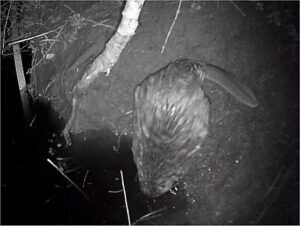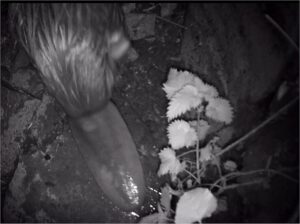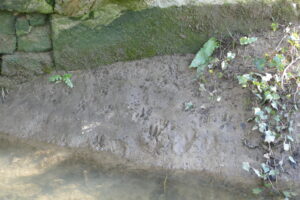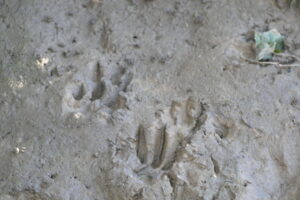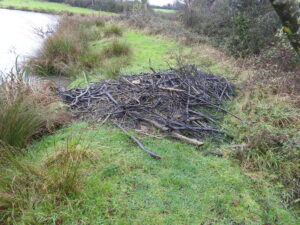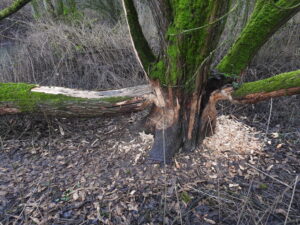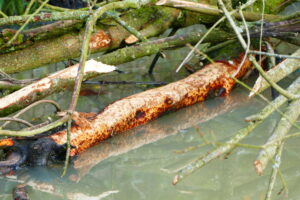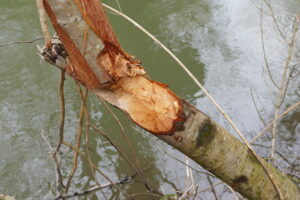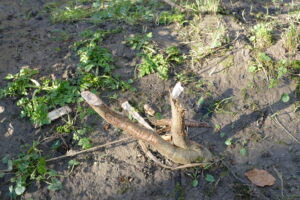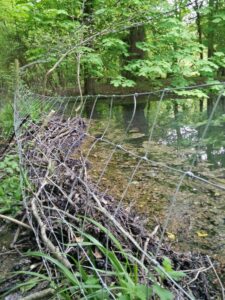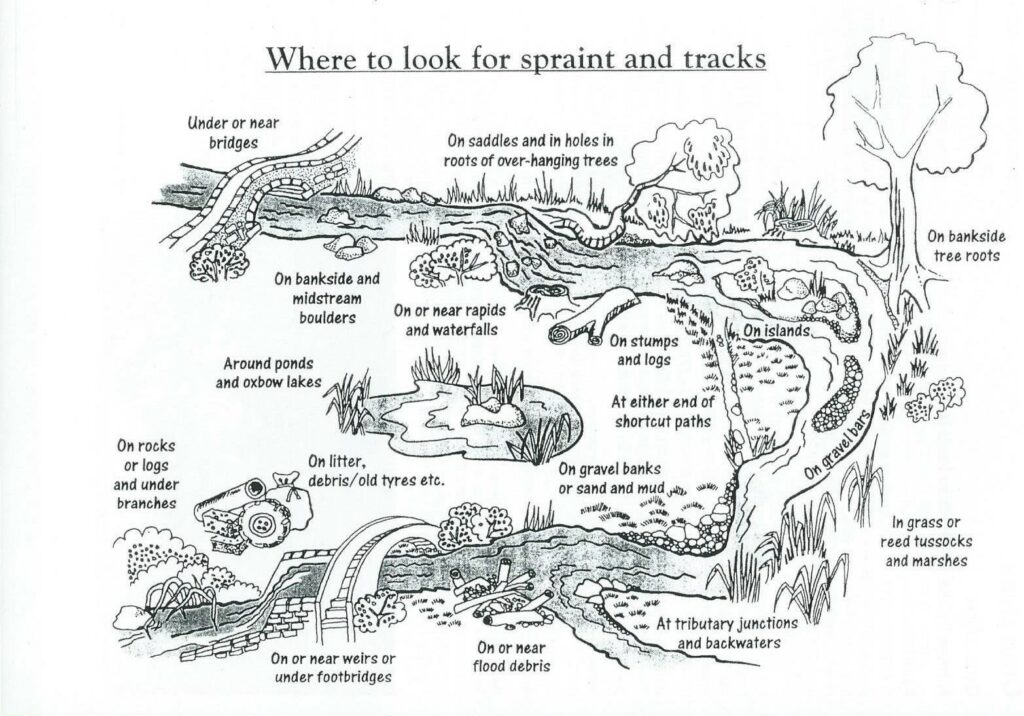
The main sign of the presence of an otter is the spraint that it left for the otters to find and decipher. It is usually black, and crinkly, of any shape or size. As it is a scent signal, the otter is not always moved to leave a large spraint; a very small sample will suffice for the length of time that the information is of current interest to an otter. It can be tubular and sausage shaped, but frequently is not; the otter hunters often referred to it as “coke” because it resembles a small
lump of that now outdated fuel.
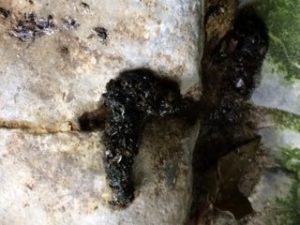
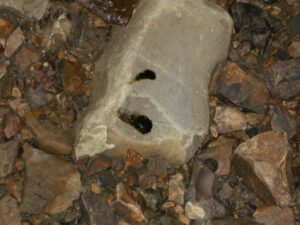
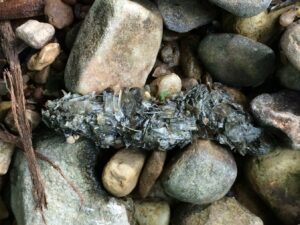
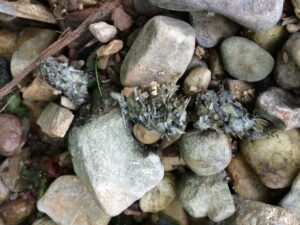
On close examination you should be able to see fish bones and scales, or occasionally feathers, frogs’ leg bones or fish eggs. Fur is not common content. A large furry dropping is probably fox, a small, pencil-slim one, mink. The infallible diagnostic feature is the smell. Otter’s spraint smells sweet, like a fresh fish or like fishmongers. The smell of a mink scat is sharp and repellent. A mink scat rapidly grows mould, which spraint never does.
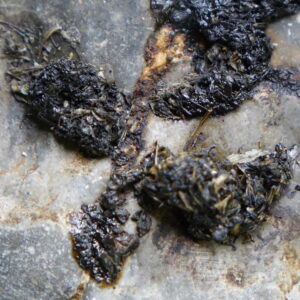
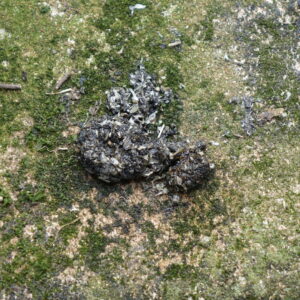
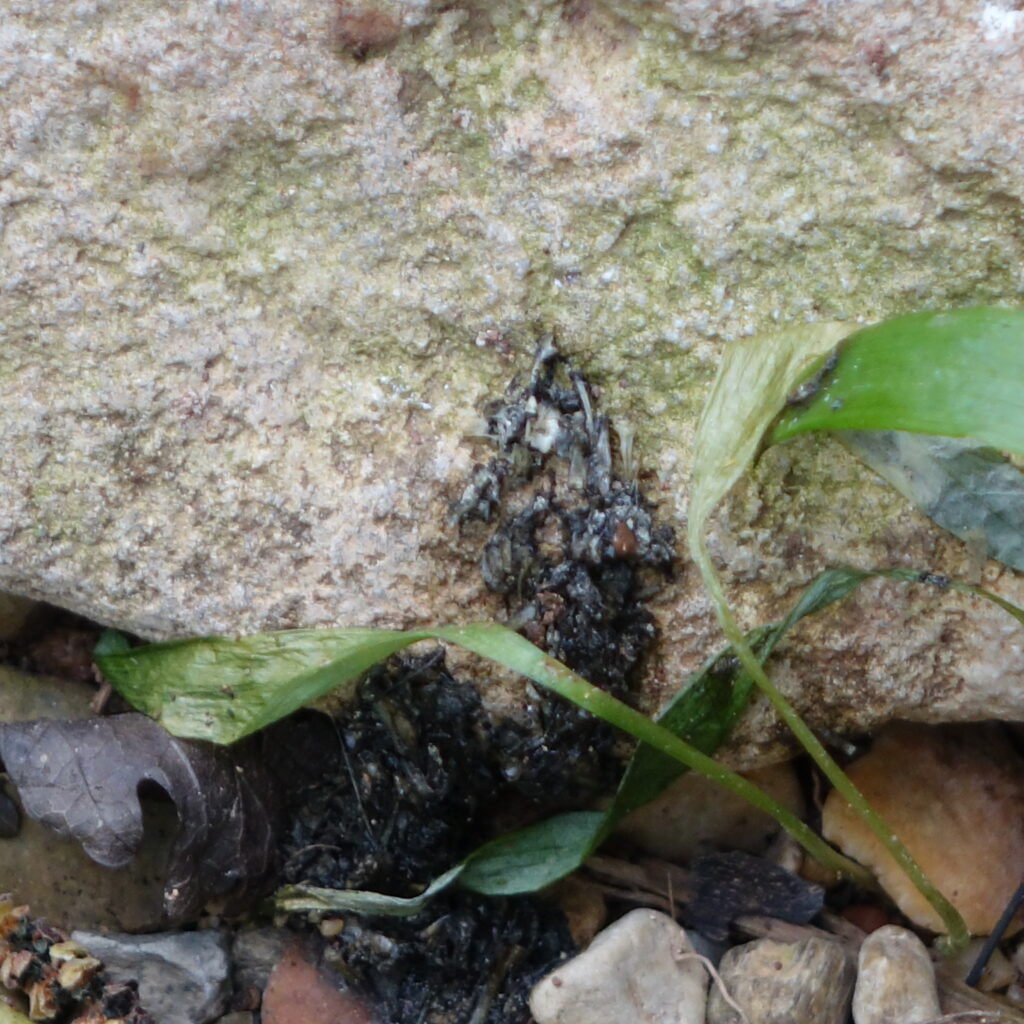
When first produced, spraint is black and moist with a coating of an oily looking slime. This will dry off, leaving a dry piece of “coke”. With age the dark colour fades, until the spraint goes grey, and then white, by which time it is just a small pile of fish shrapnel.
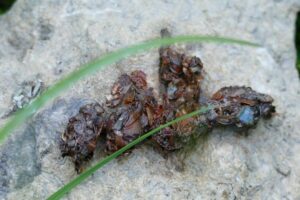
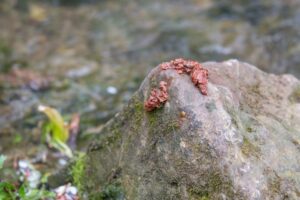
Spraint can vary from the usual black colour. In areas with crayfish significantly a part of their diet the astaxanthin in the crayfish turns the spraint pink.
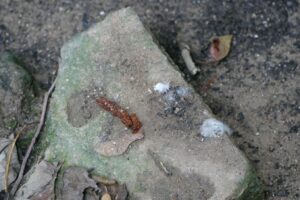
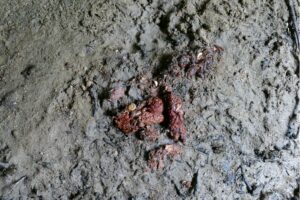
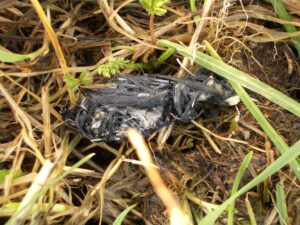
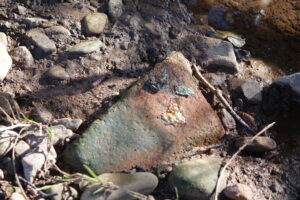
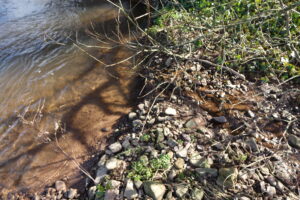
Anal jelly is a misnomer for another secretion deposited by an otter. It looks like marmalade without the lumps of peel, and like marmalade it can vary in colour from golden orange, almost brown, (the bitter, Oxford sort), through a paler yellow (Golden Shred), to a greeny tone (lime?). There are no bones or fish bits, but it has the correct smell. Originally it was thought to be the neat secretion from the anal gland with which the otter coats its secretion, hence the name. Now it is thought to be the mucus lining of the gut, which acts as a lubricant and protection against all the sharp bones and undigested bits.
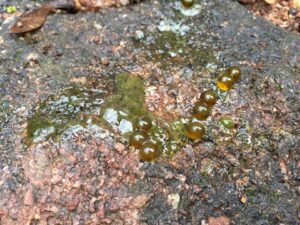
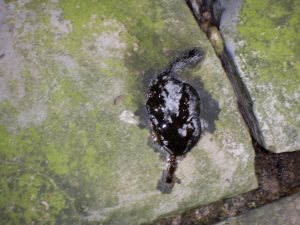
Otters keep their own distinctive narrow paths when crossing a bend in a river. They almost always spraint at one end or the other, and the passage through summer vegetation forms a neatly circular tube about 6 inches in diameter. Where they go back into the water there is sometimes a slide.
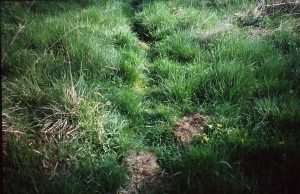
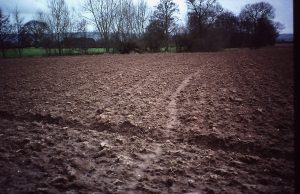
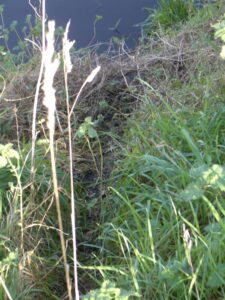
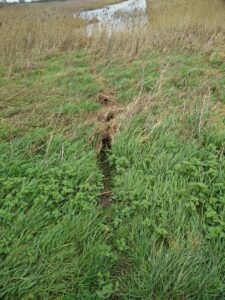
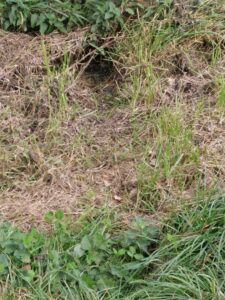
Otter tracks in snow
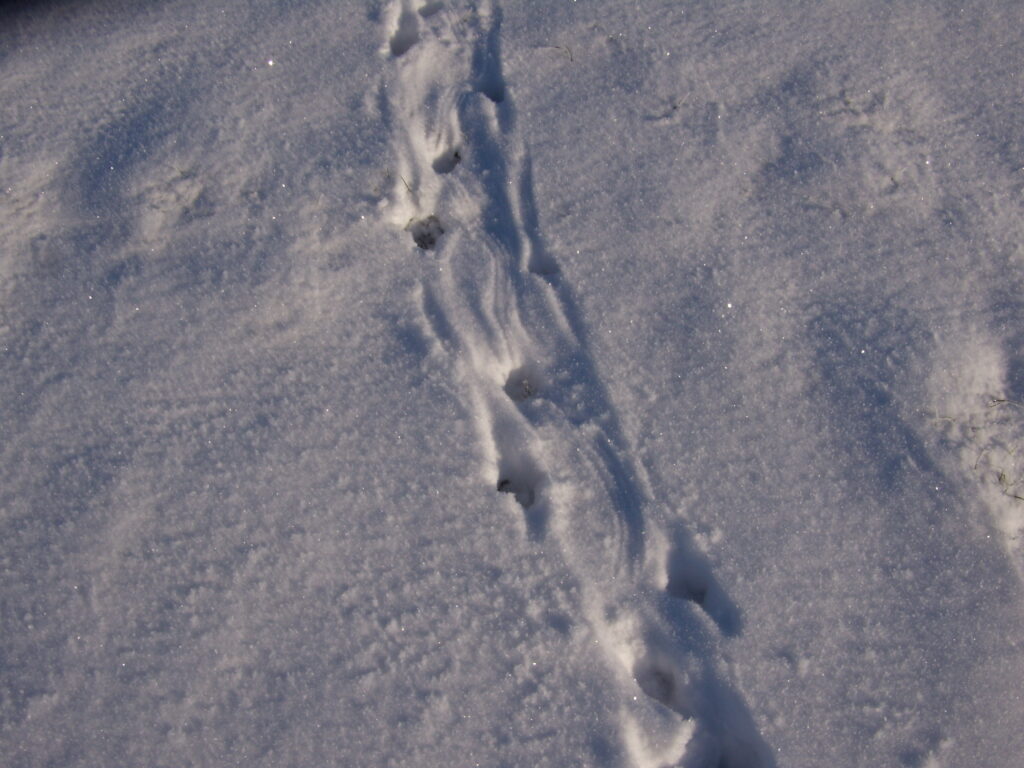
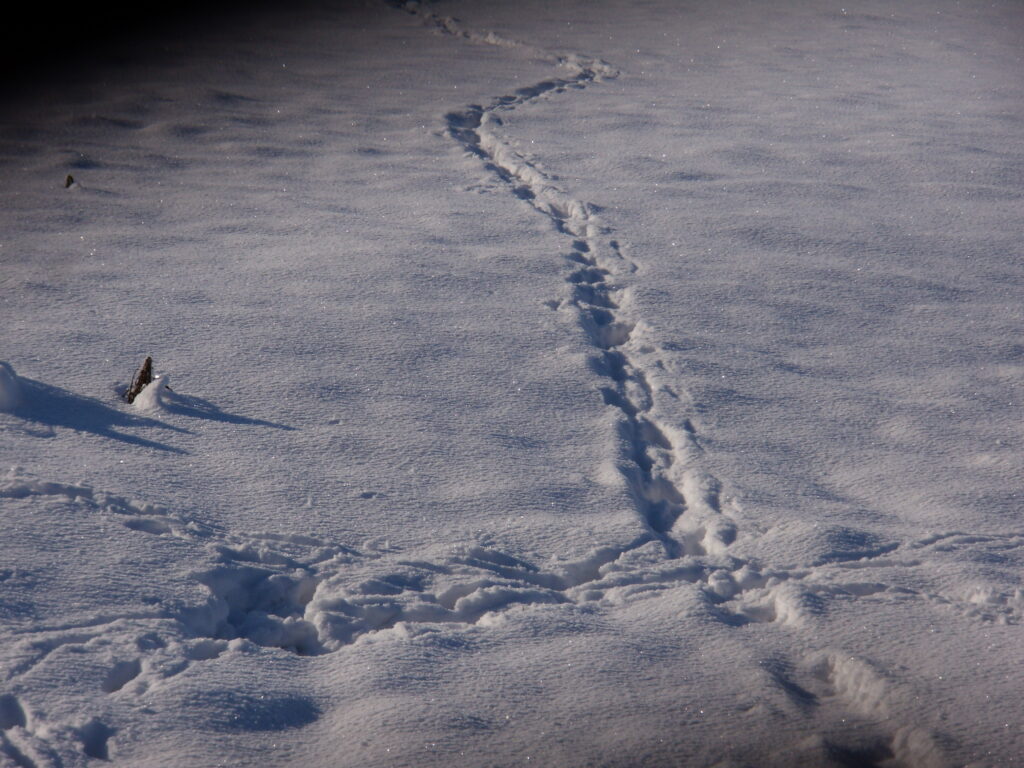
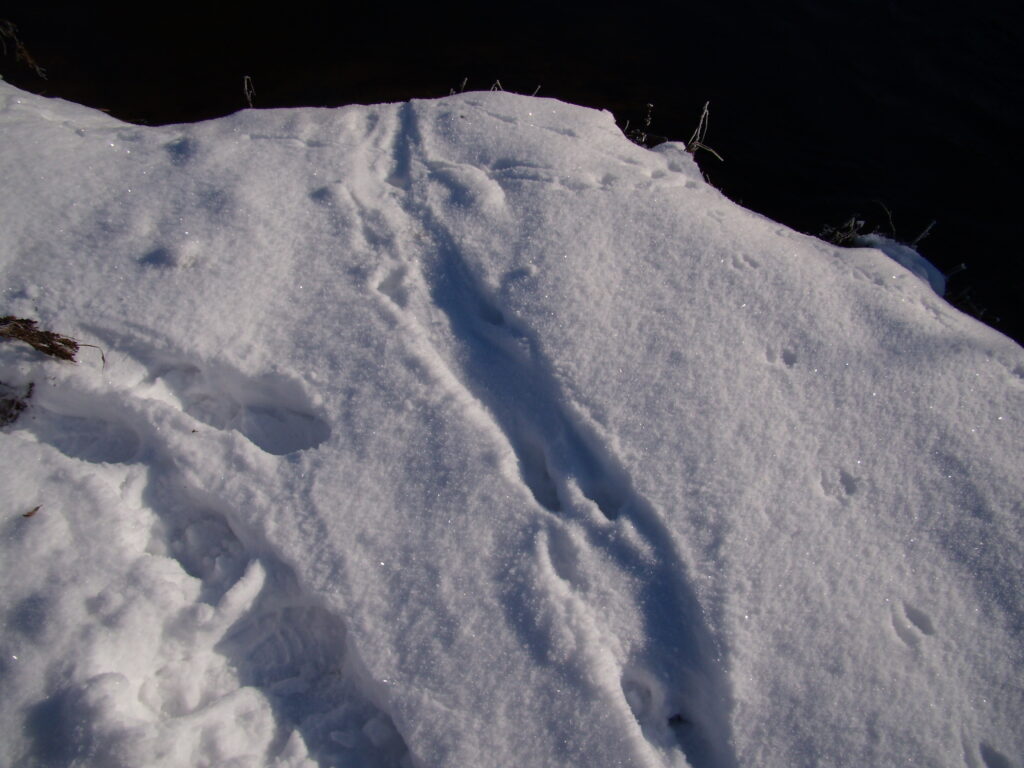
PADDING
An otters footprints are distinctive. Firstly, its feet are large, as befits a swimming animal, over 50mm wide (2 inches) and a big dog otter’s print can be 90mm wide (3.5 inches). Otters have 5 toes, as do badgers, polecats and mink (all mustelids), whereas foxes, dogs and cats have only four. If the fifth toe does not have an impression, an otters padding is asymetrical and therefore recognisable.
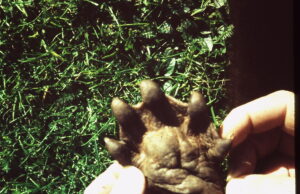
All the toes are rounded, (teardrop shaped) and they are arranged in a semi circle round the foot, with the first toe opposite the fifth along the diameter, a pattern you can make with your fingers in a “piano playing posture”. Otters have blunt, short nails, so frequently these leave no mark.
The foot itself is similar in outline to a frogman’s flipper, a cone shape tapering towards the heel, but in firm mud the heel portion does not always show. Remember that an otters back feet are larger than its front feet, as are yours, and do not therefore suspect two otters too readily.
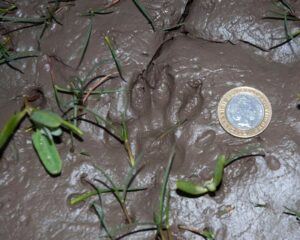
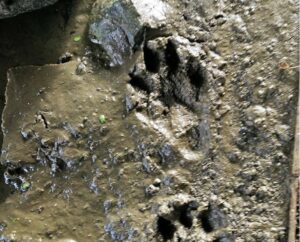
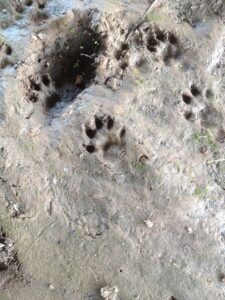
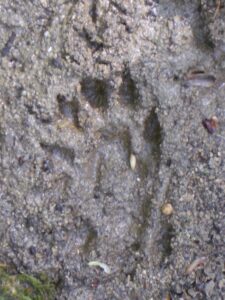
Otters usually bound, or canter, rather than walking or trotting left, right, left, right. This means that you find four pad marks close together, then a space, then another four, etc.
A raised area created by an otter to spraint upon. Usually by scraping together grass, mud, sand or gravel.
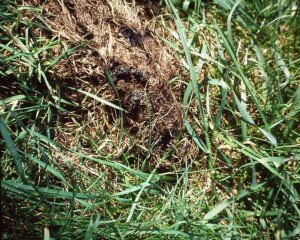
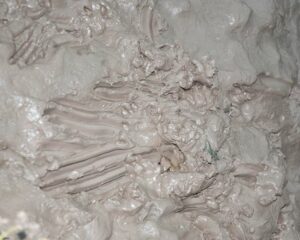
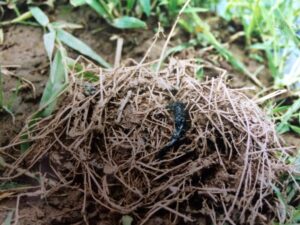
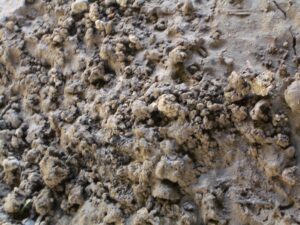
An otter will often eat out the main organs of a fish behind its head to obtain the best store of nutrients, as can be seen in this fish from the River Tone in the centre of Taunton, it is a typical sign of otter presence. Messy prey remains can sometimes be an indicator of the presence of cubs, as with these eel remains.
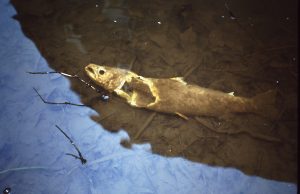
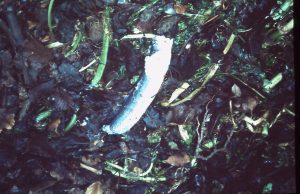
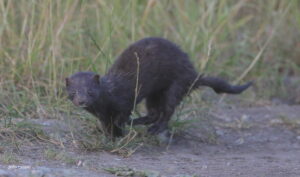
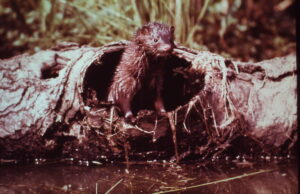
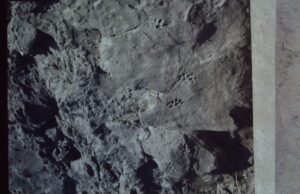
Mink, being smaller, have smaller feet. Their toes are long and slender, useful for climbing trees, so the padding is rather star shaped, with the fingers spread.
Mink Scat is always tubular, about the diameter of a biro, and pointed at one or both ends. It usually contains some fur, as well as feathers and fish bones, and often shows a twisting spiral pattern. It smells foul.
BADGER
A badger has big feet and five toes, but it has quite a different arrangement and foot shape. Its foot is a broad digger bucket, with all five toes, with long nails, arranged in a line along the front of the foot. The ball of the foot is a wide bar, at right angles to the direction of travel. You can make a similar pattern by running in bare feet across some wet sand, five toes at the front, and a broad mark behind them.
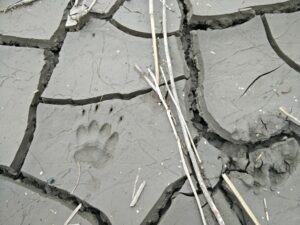
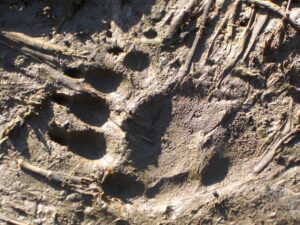
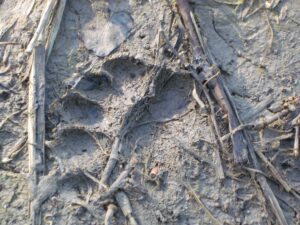
BEAVER
European Beaver, can now be found in areas of Somerset.
Beavers are the largest European Rodent. They are herbivores and live on plants, leaves and fresh bark from deciduous trees in the summer and bark of branches stored under water in the winter. Their tail is distinctively broad and flattened, their hind feet are webbed.
Their presence can be indicated by lodges, channels, burrows, stripped bark, felled trees, eating places, dams from sticks and tree branches.
They defaecate in the water, faeces contain shredded wood fibre and other plant material which sinks in water.
The forefoot has five toes with pointed claws, but as with the otter the print often shows only 4 pads. Footprints in soft mud are distinctive because of the webbing on the rear feet.
